#Examples of B2B marketing
Explore tagged Tumblr posts
Text
TOP-10 B2B MARKETING STRATEGIES WITH EXAMPLES

WHY DO YOUR BUSINESS NEED MARKETING STRATEGY?
In today’s dynamic and fiercely competitive B2B landscape, having a well-crafted marketing strategy is not just a luxury, but a necessity for any business aspiring to thrive and excel. A solid marketing strategy lays the groundwork for success, serving as a roadmap to navigate the complexities of the B2B marketplace and effectively connect with the right audience.This introduction talks about why businesses really need a strong marketing strategy to reach their goals. It also gives a quick look at the top 10 B2B marketing ideas, with real-life examples that have worked really well to help businesses grow and become better known.
There are different strategies that work really well in B2B marketing. For instance, there are special email campaigns that take care of potential customers, content marketing that shows how smart a company is, and marketing focused on individual clients that helps build long-term relationships. Also, there’s using social media in an interesting way to make customers feel loyal to a brand. Each of these strategies shows how having a complete marketing plan can lead to amazing success in the B2B world.So, let’s delve into the world of top-10 B2B marketing strategies and discover how these impactful tactics can propel businesses towards unparalleled achievements.
TOP B2B STRATEGIES WITH SEO
Two of the most powerful B2B marketing strategies, enriched by the prowess of Search Engine Optimization (SEO), are content marketing and link building.
Content marketing
Content marketing, a cornerstone of successful B2B content marketing strategy, involves creating and distributing valuable, informative, and relevant content to attract and engage target audiences. By integrating SEO best practices into content creation, such as optimizing keywords, meta tags, and URLs, businesses can improve their organic search rankings, driving more qualified traffic to their websites. A prime example of this strategy’s effectiveness is our client Almco Plumbing that increased its leads by 300% through SEO-optimized blog posts, establishing itself as an industry thought leader and cultivating a loyal customer base.
Link building
Link building is a core component of a comprehensive B2B SEO strategy aimed at enhancing a website’s authority and search engine visibility in the B2B domain. It involves acquiring quality backlinks from reputable websites that cater to B2B audiences. While practices like regular link buying and link exchanges with other businesses can yield quick links, they might not always align with search engines’ quality guidelines and could result in penalties. On the other hand, organic B2B link building strategies such as creating valuable content, guest blogging on B2B platforms, and participating in contests, scholarships, or announcements specific to the B2B sector can naturally attract relevant and authoritative links, bolstering your online presence and credibility while adhering to best practices in the evolving landscape of B2B SEO.
TOP B2B STRATEGIES WITH PPC
Two highly effective B2B marketing strategies that gain immense traction when combined with Pay-Per-Click (PPC) advertising are Geo-Targeted Ads and Remarketing.
Geo-Targeted Ads
If your B2B services have a local focus, use geo-targeted ads to reach businesses in specific regions. Customize your ad campaigns to address the needs of local businesses, showing them how your offerings cater to their unique challenges.
Remarketing
Remarketing, another game-changing B2B strategy, involves re-engaging website visitors who didn’t convert during their initial visit by displaying targeted ads across various platforms. By incorporating PPC into Remarketing efforts, businesses can amplify their brand’s visibility and stay top-of-mind with potential customers, driving them back to the website for a second chance at conversion.
TOP B2B STRATEGIES WITH SMM
In the ever-evolving world of B2B marketing, Social Media Marketing (SMM) has emerged as a dynamic force, revolutionizing the way businesses connect with their target audience. Two top B2B strategies that harness the power of SMM are Influencer Marketing and Social Media Engagement.
Influencer Marketing
Influencer Marketing has emerged as a game-changer in the B2B arena, where key industry figures and thought leaders collaborate with businesses to promote their products or services. By integrating SMM into Influencer Marketing campaigns, companies can leverage the immense reach of social media platforms to amplify their message and establish trust among their target audience.
LinkedIn Thought Leadership and Networking:
LinkedIn is the go-to platform for B2B professionals. Establish your company’s presence by sharing insightful articles, industry news, and thought leadership content. Regularly post well-researched content that addresses pain points and challenges your target audience faces. Additionally, leverage LinkedIn Groups to join discussions and establish your expertise. Networking with industry peers, potential clients, and partners can lead to valuable connections and business opportunities.
TOP B2B MARKETING STRATEGIES FOR LEAD GENERATION
When it comes to lead generation in the B2B realm, two top strategies have proven to be exceptionally effective: Webinars and Email Marketing.
Webinars
Webinars have become a force to be reckoned with in the B2B lead generation landscape, offering an interactive platform for businesses to showcase their expertise and engage with a captive audience. By promoting webinars through various channels and focusing on topics that resonate with their target audience, companies can attract high-quality leads and nurture them through the sales funnel.
Email Marketing
Email Marketing remains a cornerstone of B2B lead generation strategy, allowing businesses to directly connect with their audience in a personalized and cost-effective manner. By crafting compelling and relevant email content, companies can nurture leads throughout the sales funnel and build long-lasting relationships. A striking instance within our own experience is that we observed a remarkable 40% surge in lead conversions using our strategic B2B email marketing strategy. This achievement was realized through the adept execution of a well-planned email campaign, delivering invaluable insights and solutions directly to our valued subscribers.
TOP B2B MARKETING STRATEGIES FOR E-COMMERCE
In the fast-paced and competitive world of e-commerce, two top B2B marketing strategies have emerged as crucial drivers of success: Personalization and Social Proof.
Personalization
Personalization involves tailoring the shopping experience to meet the specific needs and preferences of individual B2B buyers. By leveraging data analytics and customer behavior insights, businesses can offer personalized product recommendations, targeted promotions, and customized content, leading to higher customer satisfaction and increased conversions.
Social Proof
Social Proof, on the other hand, utilizes customer reviews, testimonials, and social media influencers to build trust and credibility for the brand. By showcasing positive feedback and real-life experiences from satisfied clients, businesses can instill confidence in potential buyers and inspire them to make purchase decisions. Incorporating these top B2B marketing strategies into e-commerce endeavors can elevate customer engagement, foster loyalty, and ultimately lead to enhanced growth and success in the competitive e-commerce landscape.
CONCLUSION
In conclusion, staying ahead in the competitive B2B marketing landscape requires businesses to employ powerful and innovative strategies. The top B2B marketing strategies explored in this article have demonstrated their effectiveness in driving growth, building lasting relationships, and achieving remarkable success for companies across various industries. By embracing these strategies and leveraging real-life examples, businesses can elevate their brand visibility, connect with their target audience, and secure a competitive edge in the ever-evolving B2B landscape. Embracing these top strategies will undoubtedly position businesses for sustained growth and prosperity in the dynamic world of B2B marketing.

PLAN EFFECTIVE B2B STRATEGIES WITH IM4U DIGITAL MARKETING AGENCY
Ready to take your B2B marketing efforts to the next level? Plan effective B2B strategies with iM4U Digital Marketing Agency and unlock unparalleled growth and success. Contact us today to discover how our expertise and proven methodologies can elevate your brand, connect with your target audience, and drive sustainable results in the competitive B2B landscape. Let’s create a winning strategy together!
#B2B marketing strategies#B2B marketing ideas#Business marketing tactics#Marketing strategy importance#Thriving in B2B landscape#Connecting with the right audience#Effective marketing roadmap#Examples of B2B marketing#Content marketing success#SEO-driven strategies#Link building for B2B#Geo-targeted ads benefits#Remarketing in B2B#SMM for business growth#Influencer marketing impact#LinkedIn thought leadership#Lead generation strategies#Webinars for leads#Email marketing success#E-commerce marketing tactics#Personalization in B2B#Social proof for credibility#B2B marketing effectiveness#iM4U Digital Marketing Agency#Effective B2B strategies
0 notes
Text
Top 10 B2B Business Examples for Growth and Success
🚀 Ready to take your business to new heights? 💼 Discover the top 10 profitable B2B business ideas that could transform your entrepreneurial journey! Click the link to learn more and join the journey to success! #b2bbusiness #businessopportunity #b2b
Business-to-business (B2B) refers to the exchange of goods or services between two or more businesses, rather than between a business and a consumer. B2B transactions can involve a wide variety of goods and services, ranging from raw materials and components to specialized software and consulting services. The demand for B2B services is constant as businesses require them to operate and grow. In…
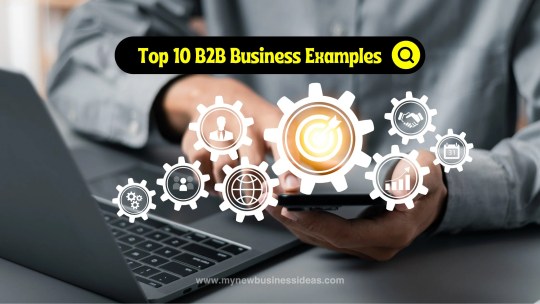
View On WordPress
#b2b business#b2b business development strategy#B2B Business Examples#b2b business ideas#b2b business ideas 2024#b2b business ideas for 2024#b2b business marketing#b2b business model#b2b marketing#best b2b business ideas#best business ideas#business ideas#honest opinion best b2b business ideas#how to make money with b2b business ideas#review best b2b business ideas#small business ideas
2 notes
·
View notes
Text
200 Social Media Marketing Tactics

#200 social media marketing tactics#marketing tactics social media#a social media marketing plan#social media marketing a strategic approach 2nd edition pdf#b2b social media strategy example#b2c social media strategy#social media tactics for marketing#social media marketing tactics#8 social media digital marketing strategies#effective social media marketing strategies#media tactics example#effective social media marketing#tactics for social media marketing#tactics of social media marketing
2 notes
·
View notes
Text
How Content Marketing Works?
Introduction:
Content creation & marketing has been a core part of Marketing for a long time. But what many people get wrong when creating a content marketing strategy is Storytelling!
Storytelling can be the difference between marketing that is impactful and something which is just another Ad on social media.
Needless to say, storytelling is not the only thing that is important for content marketing, there are many things that one has to determine when creating their content marketing strategy. Target audience, brand voice, consistency, quality, brand colours, type of content etc. In this article we’ll look at the needs & ways to create a content marketing strategy that works best for your brand & business.
Why do you need Content Marketing?
Content Marketing is the process of creating & distributing various types of content like videos, articles, social media posts, blogs etc. to attract the attention of your target audience, spread awareness about your brand & convert the same audience into loyal customers.
Content marketing has been around since old times. From the town crier selling newspapers in the city square to the pop-up ads that you see after visiting a website. The most visible difference is the priority given to the way we market our content today.
Research shows that businesses with blogs get 67% more leads & 67% marketers claim to have seen an increase in leads due to B2B content marketing.
With the current algorithms of social media platforms which pushes short video content, Instagram reels & Youtube shorts have shown to be nearly 88% more effective when included in content marketing plans.
Benefits of Content Marketing:
Online Visibility
Better Lead Generation
Customer Loyalty
Creating a Content Strategy from Scratch
To be able to take full advantage of content marketing one needs to prepare a well researched strategy. A usual content marketing strategy consists of the following:
Goals & KPIs
Determining Target Audience
Content Research & Type
Distribution Channels
Re-evaluation & Optimizations
SEO’s role in Content Marketing
SEO or Search Engine Optimisation is the king of marketing your content organically to your target audience. Thus, it is imperative to optimise your content as per the latest SEO standards set by search engines like google chrome, firefox etc.
It is also important to make sure that you:
Avoid keyword stuffing
Use relevant & specific keywords
Optimise meta-tags & description properly
Content Marketing using A.I

Content Marketing is no exception to this, with A.I you can boost your work efficiency in many stages of your plan, such as:
Automated Creation
Personalisation
Predictive Analysis
Evaluation & Measuring your Success
Understand that marketing is a never-ending process. This is because the factors that drive the market & the customers are always changing. Thus, making it detrimental to your content marketing efforts.
Measure your content’s marketing effectiveness by:
Tracking Engagement Metrics
Monitoring Website Traffic
Lead Generation
Social Shares
SEO Performance
#contentmarketing#content marketing strategy#digital content marketing#content creation services#B2B content marketing#social media content marketing#content marketing tools#content marketing trends#content distribution#what is content marketing#content marketing examples#content marketing for SEO#content optimization#SEO content creation#content marketing keywords#blog content marketing#video content marketing#email content marketing#infographic content marketing#long-form content#interactive content marketing#content marketing ROI#content engagement metrics#organic content growth#traffic through content marketing#lead generation through content#content marketing for small businesses#content marketing for e-commerce#healthcare content marketing#SaaS content marketing
1 note
·
View note
Text
Ever wondered how tech giants consistently succeed with their account-based marketing (ABM) strategies? In this Blog, we explore real-world examples of account based marketing examples from industry leaders like DocuSign, GumGum, LiveRamp, Dialpad, and Terminus. Discover how these companies use personalized, data-driven tactics to target high-value accounts and drive impressive results. From LiveRamp $50M revenue boost to GumGum’s creative comic book campaign for T-Mobile’s CEO, these case studies highlight the power of ABM in today’s B2B landscape. Learn about the strategies behind their success, including multi-channel outreach, deep personalization, and the crucial alignment between sales and marketing teams.
#abm strategies#examples of account based marketing#account based marketing#b2b lead generation companies in us#b2b lead generation
0 notes
Text
Best Social Media Management Services in Pune 2024, Are your social media efforts not meeting expectations? Now more than ever, social media is a “pay-to-play” environment that requires every resource you have a coherent action plan, 100 percent commitment, and a well-defined budget.
In addition to organic reach, getting content in front of your target audience can be a challenge without shelling out money on advertising, whether for an ongoing campaign or a one-time sponsored post.
To maximize your online presence, BeingMash Internet Marketing Agency integrates social media management Services in Pune into your overall marketing strategy.
The right Facebook or Instagram management Services can attract, nurture, and convert followers into loyal customers.
The social media management campaigns our team has implemented and monitored for our small business, corporate or franchise clients are proof of this.
Social media marketing (SMM) Services help businesses promote their product or brands on social media platforms.
Our Social Media Marketing Services in Pune are often used by businesses that want to retain their customers online but lack the skills or staff to produce effective content.
We also provide Social Media Optimization Services to optimize your social media profiles.
Social Media Marketing Services can provide a wide variety of solutions, including account management, content creation, and consumer engagement.
Social media management isn’t just a service, it’s an investment. And with BeingMash, your return is guaranteed. Stop struggling for organic reach and let us show you the power of strategic social media in Pune.
But what exactly do we do? We’re your one-stop for social media management:
All Social Media Accounts Management: We take the reins, freeing you to focus on what you do best.
Content Creation: Eye-catching visuals, witty captions, and stories that captivate your audience.
Consumer Engagement: We spark conversations, build communities, and turn followers into fans.
Contact us today and watch your social media presence explode!
Call: 7975525166, 7892007121
Your Search for Experienced Social Media Management Services in Pune Ends Here!
BeingMash offers comprehensive Facebook and Instagram strategies as well as Google ads and YouTube management.
In fact, BeingMash provides a full suite of social media marketing and management Services in Pune that company owners and marketers (no matter their niche) can believe in.
Furthermore, we integrate our social media follower growth tactics into your email marketing campaigns for targeted reach and engagement.
We also align your social strategy with your website optimization tactics to help increase site traffic and boost your conversion rate. In this way, your social media strategy is supported by your other marketing strategies and vice versa.
4.9-Star Social Media Management Strategies You Can Rely On
For more than 8+ years, clients from various industries have proven the viability of BeingMash‘s platform marketing strategies. Our results-driven strategies have raised us to the status of a leader among social media management companies in Pune.
Our enterprise and small business social media management strategies are passionately executed by our account managers, strategists, and specialists. That’s why the results are even better than expected.
Why are we the best? Because our passionate team of account ninjas, strategists, and specialists pour their hearts into every client. They craft strategies that blow expectations out of the water, delivering results that leave you speechless. Read more
#digital marketing#seo#seo company in gulbarga#affiliate marketing#best digital marketing courses#advantages and disadvantages of digital marketing#b2b vs b2c digital marketing#15 types of digital marketing#5 simple ways to do digital marketing#best online digital marketing courses#digital marketing 2023#learn digital marketing#digital marketing basics#digital marketing course#what is digital marketing#digital marketing tutorial#digital marketing examples#digital marketing training#digital marketing explained#simplilearn digital marketing#digital marketing in 5 minutes#digital marketing explainer video#online marketing#internet marketing#digital marketing tutorial for beginners#marketing 4.0
0 notes
Text
Enhancing Content Engagement with A/B Testing: Unveiling the Power of Data-Driven Decisions
Investing significant time and effort into creating what you believe is perfect content only to see it fall short with your audience can be disheartening. Fortunately, there’s a method to enhance your chances of success and ensure your content resonates with decision-makers in your target audience—enter the best A/B testing resources. This potent tool allows you to test different content versions, increasing engagement conversions and optimizing the success of your content distribution. This article explores the significance of testing in content distribution and provides practical tips for seamlessly incorporating it into your performance marketing strategy.
Understanding the Importance of Content A/B Testing
A/B testing is pivotal in content distribution as it empowers data-driven decision-makers to test various content versions, identifying what resonates best with the audience. Without testing, you might rely on guesswork or anecdotal evidence, missing out on valuable insights into audience preferences. By testing diverse content versions, you gather concrete data, fine-tune content, and enhance engagement, conversions, and overall strategy in B2B marketing campaigns.
Get full insights: https://itechseries.com/blog/a-b-testing-strategies-for-b2b-marketing-with-examples/

Setting Up A/B Testing for Your Content Distribution
The thought of creating an A/B test for your content might seem daunting, but fear not—it’s a straightforward process to refine your content strategy in B2B marketing.
Define your hypothesis and desired outcomes.
Choose variables to test, such as headlines, images, or calls-to-action.
Determine your sample size for statistical significance.
Run the test diligently, track metrics, and gather sufficient data.
Analyze results, implement successful variations, and refine strategies if needed.
Key Metrics for Evaluating A/B Test Performance
When evaluating A/B test results, consider key metrics like click-through rate (CTR), conversion rate optimization, bounce rate, time on page, and engagement rate. These metrics offer insights into content performance and audience engagement, guiding data-driven decisions for content optimization.
Learning from Successful A/B Testing Case Studies
Successful A/B testing case studies from platforms like BuzzSumo, HubSpot, and BustedTees highlight the impact of testing different content elements on engagement, leads, and sales. These cases emphasize the importance of data-driven decision-making and continuous optimization in content marketing strategies.
Leveraging iTech Series for Enhanced A/B Testing and Content Optimization
iTech Series integrates dual-sample testing into its "brand-to-demand" approach, enabling precise audience segmentation, tailored messaging, and amplified content distribution. With proven methodologies and analytics-driven optimization, iTech Series maximizes content engagement, audience resonance, and B2B marketing success.
When engaging decision-makers for your content, consider these best A/B testing resources:
Analyzing and Interpreting A/B Test Results
Once your A/B test is complete, follow these steps to make informed decisions about your content distribution strategy:
Look at the metrics: Review the A/B testing metrics measured during the test to identify which variation performed better, considering the magnitude of the differences.
Determine statistical significance: Utilize a statistical significance calculator to assess if the results are statistically significant, distinguishing whether the performance difference is due to chance or a genuine improvement.
Consider external factors: Reflect on external factors that might have influenced results, such as changes in traffic or seasonality, and incorporate these considerations when interpreting the outcomes.
Consider the impact on goals: Evaluate the impact of results on your business goals. If your objective is to increase conversions, focus on the conversion rate metric and assess how the variations align with your overall objectives.
Make data-driven decisions: Use the insights gained to make data-driven decisions regarding your content marketing strategy. Implement the successful variation if one significantly outperforms the other. If inconclusive, be open to running additional data-driven testing with different variables.
Follow for more info: https://www.itechseries.com/
Wrapping Up
A/B testing is a game-changer in optimizing content distribution and driving audience engagement. By leveraging data-driven insights and proven strategies, marketers can refine content strategies, reach the right audience segments, and achieve unparalleled success in B2B performance marketing. Partner with iTech Series for comprehensive content strategies that deliver impactful results in today's competitive digital landscape.
0 notes
Text
Social Media Marketing for Small Businesses
Social media marketing is a great way for small businesses to reach potential customers and grow their brand. Here’s a quick guide to get started:
Pick the Right Platforms Focus on platforms where your target audience is most active. For example, Instagram is great for visual brands, while LinkedIn is perfect for B2B.
Create Simple, Engaging Content Share valuable and visually appealing posts like product photos, tips, or behind-the-scenes content. Keep it short and relevant to your audience.
Post Consistently Develop a posting schedule and stick to it. Regular posting helps keep your audience engaged and improves your online presence.
Engage with Your Followers Respond to comments and messages to build trust and loyalty. Interaction shows your business is active and cares about its audience.
Run Ads on a Budget Social media ads are cost-effective and allow you to target specific demographics. Start small and track the performance of your ads.
By following these steps, small businesses can effectively use social media marketing to build an audience, increase brand awareness, and grow their customer base.
#marketing#digital marketing#business#branding#social media#social media marketing#SMM#social media management#social media optimization#social media for small business#social media for business#social media for marketing
5 notes
·
View notes
Text
Why Your B2B Business Needs Brand Storytelling & How to Make It Happen
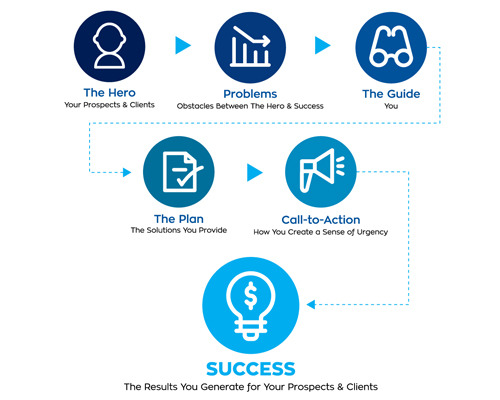
Your brand may be built around your solutions, but it’s not just a product or a service.
It’s part of a story you share with your prospects and customers.
Your prospects might be interested in your products and services, but what they’re really want is a solution to their problems and whatever else prevents them from achieving their business goals.
And while you might have terrific solutions, the most effective story you can tell prospects is not the story of how great you are. It’s their story – the story of how they will overcome the obstacles standing between them and their goals, with you as their trusted guide. Anyone can try to sell them something. You want the opportunity to serve them as a trusted guide and partner.
That is the essence of brand storytelling, as well as the essence of every good story.
There’s a hero (your prospect), a guide (that’s you), and a daunting problem that must be solved before the hero can reach their goal.
Brand storytelling works because of a simple but often overlooked principle of effective B2B marketing: prospects need to know that you understand their needs and challenges and can connect the dots between their problems and your solutions.
Here’s what you need to know to make your B2B brand story resonate powerfully with your audience, generate leads, and fuel your growth.
Avoid Traditional Marketing Traps
Start by leading with the problems you solve and the opportunity created as a result.
Traditional marketing leads with products, services, features, and benefits. When you speak too soon or too much about the features of your products or services, it comes across as pushy self-promotion because you have not yet established your credibility or earned their trust.
When your content demonstrates your understanding of their problems and your ability to solve them, you build credibility. Case studies, reviews and testimonials are a good example of content that provides the “social proof” of your problem-solving capabilities.
Traditional, promotional marketing can feel like sitting across from a date who spends the entire evening talking about themself.
Self-congratulatory content in particular—being the “top” or “leading” provider, whatever Gartner quadrant you fall into, and all the awards you’ve won—doesn’t generate leads because it doesn’t resonate, but effective brand storytelling does.
Identifying Pain Points
Brand storytelling should demonstrate your understanding of prospect problems.
To identify their pain points, here is what you can do:
Survey your current customers to understand what led them to you and what impact your solutions have had on their business
Conduct secondary market research by reviewing the web where people are discussing their problems: reviews of competitors, discussion boards (e.g. Reddit, Vistage community boards, and industry websites)
Spend more time asking prospects about the effects of their biggest problems and what they want to achieve
Conduct primary market research by interviewing pre-qualified prospects to see if they have the problems that you solve and what they think of your solutions
Note: no market is homogenous – it’s important to segment your target markets by their unique requirements. Many may have the same type of problem but each segment may value aspects of your solutions differently (e.g. specific compliance requirements, how much they are impacted by the problem, price sensitivity, whether they are end-users or resellers, etc.)
Once you’ve identified the common problems that your brand solves, storytelling gets a lot easier because that is center of your brand story.
3 Steps to Telling the Story of Your B2B Brand
Now that you know the pain points you want to incorporate into your storytelling, it’s time to incorporate them.
No two brands are exactly alike, so no two stories are exactly alike but there are commonalities in the storytelling process for B2B brands.
Step 1: Lay the Foundation
Revisit your foundational messaging by going through the brand story process. There’s no better place to start implementing it than on your home page – it’s recommended that you keep your design language in place (it doesn't need to be a web redesign project) but it’s critically important to recreate the content, which is often overly focused on self-promotion and features/benefits.
Rework your About page and main solution pages. Then create a company boilerplate of 100 words, an elevator pitch of 100 characters, and a tagline of just a few words, incorporating the essence of your brand story in each.
Step 2: Develop Educational Thought Leadership
Develop interesting and educational thought leadership that helps prospects understand what will solve their problem and who is best to solve it. You will have more credibility if you acknowledge that your solutions aren’t the best fit for every prospect and circumstance. This will also help you appeal to those who are the right fit for your services.
Foundational web pages, blogs, case studies, guides, and ebooks that educate prospects on how your solutions solve their problems all help generate leads. Promotional content like company news and awards is fine, as long as it’s surrounded by thought leadership.
Step 3: Spread the Word
In virtually any market, the number of prospects actively searching for your solutions will be outnumbered by those who aren’t, so it’s important to send some thought leadership out into the world: email campaigns, direct mail, events, content syndication, and earned PR (published articles and speaking opportunities that can’t be purchased – you have to earn them with a successful pitch to publication editors or industry associations).
B2B Brand Storytelling Implementation Example
Below is an example of a professionally designed website that looked good but didn’t resonate well with prospects because of its focus on making bold claims without explaining how problems would be solved or how its solutions would work. Today, a brand story-focused website generates more leads and is the result of a successful storytelling approach.
Before
After
Ready to Improve Your B2B Storytelling & Grow Your Business?
While there is some art to storytelling, it’s a repeatable process that you can do yourself.
However, it’s hard to be effective at something if you haven’t done it before or don’t have the time or resources to commit to it. Agencies like Innovaxis specialize in B2B storytelling. In fact, Innovaxis offers a B2B Brand Storytelling Workshop to help you get started.
12 notes
·
View notes
Text
Influencer Outreach: A Comprehensive Guide to Building Successful Partnerships
In these days’s digital panorama, influencer advertising has grow to be a powerful approach for manufacturers looking to extend their attain, enhance credibility, and drive conversions. By taking part with influencers who've a dedicated following, businesses can faucet into engaged audiences that believe and value the guidelines of their favourite content creators. However, a hit influencer outreach calls for a nicely-notion-out technique. This guide will take you through the key steps to identifying, accomplishing out to, and participating with influencers efficaciously.
Best strategies for influencer outreach in 2025
Understanding Influencer Outreach
Influencer outreach is the technique of setting up connections with influencers to create jointly beneficial partnerships. The aim is to leverage their target audience to boom emblem recognition, generate leads, or enhance sales. Unlike conventional advertising and marketing, influencer advertising is built on authenticity and personal connections, which makes it more appealing to modern clients.
Step 1: Define Your Objectives
Before accomplishing out to influencers, it's miles essential to outline your desires. Ask yourself:
Are you seeking to boom emblem cognizance?
Do you want to drive traffic in your website?
Are you targeted on generating income?
Do you want to construct long-term partnerships with influencers?
Having a clean know-how of your objectives will help you pick out the right influencers and degree the achievement of your campaign.
Step 2: Identify the Right Influencers
Not all influencers can be a good fit to your brand. To locate the right ones, recollect the subsequent factors:
Relevance: Ensure the influencer’s content aligns along with your emblem’s values and target market.
Engagement Rate: High follower counts do no longer usually translate to excessive engagement. Look at likes, feedback, and shares to decide how engaged their target market is.
Authenticity: Followers can sense whilst an influencer is actually captivated with a logo versus whilst they're merely selling for a paycheck. Authenticity is key to a success influencer marketing.
Platform Suitability: Different influencers dominate distinctive platforms. For example, Instagram and TikTok are fantastic for lifestyle and beauty manufacturers, while LinkedIn is extra suited for B2B collaborations.
Step three: Research and Shortlist Influencers
Use equipment like BuzzSumo, Upfluence, or Heepsy to discover potential influencers for your niche. Once you have got a list, examine their content, target market demographics, and beyond collaborations to decide their suitability.
Step 4: Craft a Personalized Outreach Message
Influencers acquire numerous collaboration requests each day, so your outreach message needs to face out. Personalization is fundamental. Here’s a way to craft an powerful message:
Start with a Genuine Compliment: Show which you have engaged with their content.
Introduce Your Brand Briefly: Keep it concise and compelling.
Explain Why You Chose Them: Mention what you recognize about their content and why you trust they are a fantastic in shape.
Present the Collaboration Opportunity: Clearly define what you're providing and the way it benefits them.
Call to Action: Ask in the event that they could be interested and how they would really like to continue.
Step 5: Follow Up Professionally
If you don’t receive a response, observe up after a few days. Influencers are often busy, and a polite follow-up can remind them approximately your offer. However, avoid being too chronic as it can come off as pushy.
Step 6: Negotiate Terms and Set Expectations
Once an influencer expresses interest, talk the phrases of the collaboration. Key points to cowl include:
Deliverables: Define the kind and variety of posts, movies, or tales.
Timeline: Agree on deadlines for content advent and posting.
Compensation: Decide whether the collaboration is paid, barter-based, or associate-primarily based.
Content Guidelines: Provide any vital logo recommendations while permitting creative freedom.
Performance Tracking: Determine how fulfillment will be measured (e.G., engagement, website traffic, conversions).
Step 7: Build Long-Term Relationships
Instead of one-off collaborations, remember building long-term relationships with influencers. When influencers emerge as brand advocates, their promotions experience extra proper and credible. To foster sturdy relationships:
Engage with Their Content: Like, comment, and percentage their posts even while you’re not walking a campaign.
Provide Creative Freedom: Trust their expertise in content material introduction.
Offer Exclusive Perks: Provide early get right of entry to to merchandise or invite them to special events.
Step 8: Monitor and Measure Results
Tracking the fulfillment of your influencer marketing campaign is important to know-how its effect. Use tools like Google Analytics, UTM monitoring, and social media insights to measure key overall performance indicators (KPIs) consisting of:
Engagement Rate: Likes, feedback, shares, and saves.
Reach and Impressions: Number of those who saw the content.
Click-Through Rate (CTR): Percentage of users who clicked on the provided links.
Conversion Rate: Number of individuals who completed the favored motion (e.G., purchase, signal-up).
Step 9: Optimize Your Strategy
Once you have got analyzed the outcomes, refine your approach for destiny campaigns. Identify what worked well and areas for improvement. Consider:
Testing unique sorts of content material codecs (videos, carousel posts, reels).
Experimenting with numerous messaging styles.
Collaborating with influencers in one-of-a-kind niches.
Common Mistakes to Avoid
Focusing Only on Follower Count: A smaller influencer with a devoted audience can regularly yield higher results than a celebrity influencer with a disengaged following.
Ignoring Audience Demographics: Ensure the influencer’s target market aligns along with your goal market.
Being Too Controlling: Influencers know their audience fine; provide them innovative freedom.
Not Disclosing Sponsored Content: Compliance with FTC hints is crucial for transparency and accept as true with.
Neglecting Relationship Building: Strong relationships cause greater true and effective campaigns.
#Best strategies for influencer outreach in 2025#influencer marketing#digital marketing#social media optimization
2 notes
·
View notes
Text
Online Classified Ads: A Classic Example of C2C E-Commerce
The Power of Online Classified Ads in C2C E-Commerce

In today’s digital era, e-commerce has redefined how individuals and businesses interact, creating seamless connections between buyers and sellers. A shining example of this transformation is the rise of C2C (Consumer-to-Consumer) e-commerce, with online classified ads leading the charge. Platforms like Craigslist, OLX, and Facebook Marketplace have revolutionized the traditional marketplace by making transactions faster, more convenient, and globally accessible.
Let’s explore how online classified ads exemplify C2C e-commerce, the technology behind their success, and the significant role they play in shaping the digital economy.
What is C2C E-Commerce?
C2C e-commerce, or consumer-to-consumer electronic commerce, facilitates direct transactions between individual buyers and sellers using third-party platforms. Unlike B2C (Business-to-Consumer) or B2B (Business-to-Business) models, C2C focuses entirely on connecting consumers for transactions without a middleman business.
Online classified ads are the backbone of C2C e-commerce, acting as digital hubs where users list products and services for sale. Other users can then browse, negotiate, and purchase directly from the seller.
Why Online Classified Ads Are Ideal for C2C E-Commerce
1. Direct Consumer Interaction Classified platforms prioritize direct communication between buyers and sellers. This immediate interaction fosters trust and simplifies decision-making, making transactions quicker and more personal.
2. Low or Zero Transaction Costs Most platforms allow users to post ads for free or charge minimal fees. This affordability encourages individuals to sell items and services, creating a thriving marketplace.
3. Diverse Offerings From second-hand furniture and electronics to rental properties and job postings, online classifieds cover a broad spectrum of categories, catering to a wide range of consumer needs.
4. Global and Local Reach Users can choose between targeting local buyers for quick sales or reaching a global audience for niche products, making these platforms highly versatile.
5. User-Friendly Platforms Designed to be simple and intuitive, classified sites are accessible to users of all skill levels, enabling easy posting, browsing, and communication.
The Technology Behind Online Classified Platforms
The success of online classified ads lies in the sophisticated technologies powering these platforms:
Advanced Search Algorithms: These ensure users quickly find relevant listings based on location, category, and price.
Secure Payment Gateways: Many platforms integrate secure payment options to safeguard transactions.
Responsive Web Design: Classified platforms are optimized for mobile devices, ensuring consistent user experiences across screens.
AI-Powered Recommendations: Artificial intelligence offers personalized suggestions based on user preferences and browsing behavior.
SEO and Analytics: Platforms leverage SEO to boost the visibility of listings on search engines and use analytics to understand and enhance user engagement.
Benefits of Online Classified Ads in C2C E-Commerce
1. Empowering Small Sellers Classified ads provide a level playing field for individuals and small businesses to reach buyers without requiring a physical storefront.
2. Promoting Sustainability By encouraging the resale of second-hand goods, these platforms reduce waste and contribute to a circular economy.
3. Faster Transactions With features like instant messaging and real-time notifications, classified platforms streamline communication and accelerate deals.
4. Cost-Effective Marketing Sellers can create impactful ads with photos and detailed descriptions without needing expensive marketing campaigns.
Challenges in C2C E-Commerce via Classified Ads
Despite their advantages, online classifieds face challenges:
Trust Issues: Buyers may worry about product quality, payment security, or fraudulent listings.
Minimal Regulation: Without strict oversight, issues like spam, counterfeit goods, and misleading ads may arise.
High Competition: The abundance of listings can make it hard for sellers to stand out without investing in premium placements.
Logistics: Delivery is often left to buyers and sellers, complicating transactions for bulky or long-distance items.
How Online Classified Ads Drive C2C E-Commerce Growth
Despite these obstacles, classified platforms remain pivotal in the growth of C2C e-commerce for several reasons:
Democratization of Commerce: They empower anyone with internet access to participate in the marketplace.
Innovative Monetization: Features like promoted ads and premium listings offer additional value to users while generating revenue for platforms.
Community Building: By fostering local transactions and encouraging user feedback, classified platforms create engaged communities.
Optimizing Classified Listings with SEO
For sellers, SEO (Search Engine Optimization) is essential to boost visibility on classified platforms. Including relevant keywords like “buy and sell locally,” “best deals online,” or “affordable used goods” can significantly enhance listing performance.
Companies like KSoft Technologies specialize in web development, SEO strategies, and digital marketing, helping classified platforms and individual sellers achieve:
Higher rankings on search engines.
Enhanced user interfaces for better engagement.
Scalable and secure technology solutions.
The Future of Online Classified Ads in C2C E-Commerce
The future of online classifieds is bright, with innovations in AI, blockchain, and logistics solutions promising to address current challenges. These advancements can enhance trust, security, and overall user experiences, ensuring the continued growth of C2C e-commerce.
As technology evolves, businesses offering web development, mobile app development, and SEO services, such as KSoft Technologies, will play a vital role in empowering classified platforms to stay competitive and innovative.
Conclusion
Online classified ads are a cornerstone of C2C e-commerce, creating spaces for direct consumer interaction, affordable transactions, and sustainable commerce. By connecting buyers and sellers without traditional barriers, these platforms exemplify the potential of technology-driven marketplaces.
Whether you're looking to improve your classified platform or enhance your digital presence, KSoft Technologies offers cutting-edge solutions in web development, mobile app creation, and SEO strategies to help you thrive.
Visit KSoft Technologies today and discover how we can help elevate your business in the evolving digital economy! 🚀
#business to business#ecommerce#branding#artificial intelligence#web design#web development#seo services#techinnovation#economy#erp software#entrepreneur#adobe#technews#computer#technology
3 notes
·
View notes
Text
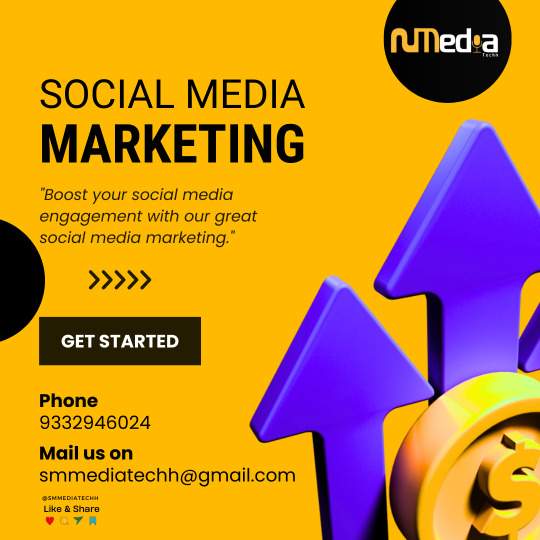
In today’s digital world, social media has become an essential part of our daily lives. Whether you're sharing a photo with friends or following your favorite brands, social media platforms are everywhere. But did you know they are also powerful tools for businesses? That’s where social media marketing comes in.
What is Social Media Marketing?
Social media marketing is the use of social platforms like Facebook, Instagram, Twitter, and LinkedIn to promote your business, connect with your audience, and build your brand. It's about creating and sharing content that engages your audience and encourages them to interact with your business.
Why is Social Media Marketing Important?
Reach a larger audience: Billions of people are on social media. This means you can reach potential customers all over the world.
Boost brand awareness: Social media helps people get familiar with your brand, products, and services.
Engage with your audience: You can talk directly to your customers, answer questions, and get feedback.
Drive traffic to your website: By sharing content with links to your site, you can bring more visitors to your pages.
Cost-effective marketing: Many social media platforms offer free tools to promote your business. Paid ads are also affordable and can be targeted to the right audience.
Key Social Media Platforms for Marketing
Facebook: With over 2.8 billion users, Facebook is ideal for reaching a wide audience. Businesses can create pages, post updates, run ads, and engage with followers.
Instagram: Instagram is perfect for visually-driven brands. If your business relies on photos or videos, like fashion, food, or art, Instagram is a great choice.
Twitter: Twitter is useful for sharing quick updates, news, and engaging in conversations. It's also great for customer service interactions.
LinkedIn: If your business targets professionals or B2B clients, LinkedIn is the best platform. It’s excellent for networking and establishing industry authority.
TikTok: This platform is a must if you want to reach younger audiences with creative, fun, and short video content.
Tips for Effective Social Media Marketing
Know your audience: Who are your customers? What are their interests? Understanding your audience helps you create content that speaks to them.
Post consistently: Regularly posting helps keep your audience engaged and builds a strong online presence. Tools like Hootsuite or Buffer can help schedule posts.
Create valuable content: Your posts should be interesting, informative, or entertaining. Share tips, behind-the-scenes looks, or answer customer questions.
Use hashtags: Hashtags help people find your posts. For example, if you’re posting about social media marketing, use hashtags like #SocialMediaMarketing or #DigitalMarketing.
Engage with your followers: Reply to comments, like posts, and thank people for their support. Engaging with your audience builds trust and loyalty.
Analyze and adjust: Use analytics tools like Facebook Insights or Instagram Analytics to see what’s working and what’s not. Adjust your strategy based on the data.
Final Thoughts
Social media marketing is one of the most effective ways to grow your business in today’s digital landscape. By understanding your audience, consistently posting valuable content, and engaging with your followers, you can create a strong online presence and boost your brand. Start small, experiment with different platforms, and soon you’ll see the power of social media marketing in action!
#digital marketing#social marketing#social media#agency#digital marketing services#social media marketing#seo services#seo#best digital marketing company#search engine optimization#search engine marketing#smmediatechh#social media update#social media strategy#services#social media services
5 notes
·
View notes
Text
B2B ecommerce website development in Indore
B2B eCommerce website development in Indore presents a lucrative opportunity for businesses looking to establish a strong online presence. With its rich talent pool, cost-effective solutions, and innovative approach, Indore has become a preferred destination for digital transformation projects. Online transactions between companies, as opposed to between companies and customers, are referred to as business-to-business (B2B) eCommerce. Strong B2B eCommerce solutions are essential given the growing dependence on digital platforms for supplier relationships, inventory control, and procurement.
The Significance of B2B eCommerce
Streamlined Operations: Efficiency is increased by automating procedures including order placing, tracking, and payment. Global Reach: Companies are able to grow their clientele beyond national borders. Cost Efficiency: By reducing manual intervention, digital systems lower operating expenses. Improved Customer Experience: Self-service portals, bulk ordering, and customized pricing are examples of features that increase consumer pleasure.
Why Indore Is a Center for the Development of B2B eCommerce
Indore has established itself as one of the fastest-growing IT cities in India. Businesses might think about Indore for the creation of B2B eCommerce websites for the following main reasons: Skilled Talent Pool: Indore is home to a sizable population of web developers, designers, and IT specialists that are knowledgeable about cutting-edge technologies. Cost-Effective Solutions: Development services in Indore are exceptional value for money and are less expensive than in major cities. Successful Startup Ecosystem: The dynamic entrepreneurial climate in Indore encourages originality and inventiveness in web development. Robust Infrastructure: The city's cutting-edge IT infrastructure facilitates timely delivery and smooth project execution. Client Proximity: Because of its advantageous location, companies in Central India can work with developers situated in Indore with ease.
How to Create a Business-to-Business eCommerce Website in Indore ?
Building a strong B2B eCommerce platform requires careful preparation and implementation. Here’s a step-by-step guide:
1. Analysis of Requirements
Determine the target market and business goals.
Specify the essential features and integration requirements.
2. Selecting the Appropriate Platform Depending on your needs, choose bespoke development or platforms like Magento or Shopify Plus. 3. Design of UI/UX
Create prototypes and wireframes for approval.
Concentrate on producing a design that is neat, expert, and user-focused.
4. Growth and Assimilation
To create the website, write clear, optimal code.
Increase functionality by integrating third-party tools and APIs.
5. Quality Assurance and Testing
To get rid of bugs, do thorough testing.
Make sure it works on all devices and browsers.
6. Implementation and Upkeep
Use secure servers to launch the website.
Assure seamless operations by providing regular updates and support.
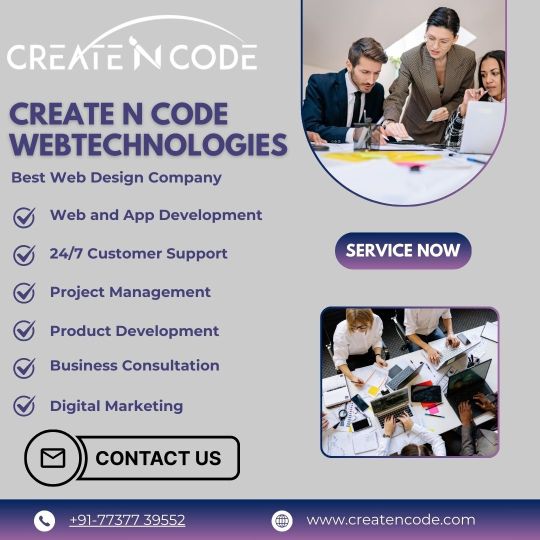
#website#website design#web design#seo services#digital marketing#web development#usa#usa news#india#web hosting#web developers
4 notes
·
View notes
Text
Expanding Horizons: Exploring New Markets for Business Development
Article by Jonathan Bomser | CEO | AccountSend.com

As your business matures, tapping into new markets—be they niche industries, emerging markets, or even geographical expansion—can be a lucrative strategy for growth. If you're contemplating business expansion, here are seven key points to keep in mind.
DOWNLOAD THE NEW MARKETS INFOGRAPHIC HERE
Research and Understand the Market
Before diving into a new market, invest time and resources in thorough research. Understand the market dynamics, customer preferences, cultural nuances, and the competitive landscape. Tools like global business expansion databases and data analysis software can provide valuable insights.
Evaluate Your Business's Capabilities
Assess your business's capacity to handle expansion. This involves reviewing your financial health, operational capacity, and the adaptability of your products or services to the new market. Also, consider if your current team can manage the expansion or if additional hiring is needed.
Build a Targeted B2B Contact Database
Having a robust B2B contact database is crucial for successful market entry. Gather verified contact info, including email addresses and phone numbers, of decision-makers in the new market. Reputable B2B data providers can assist in building a comprehensive contact database.
Develop a Tailored Marketing Strategy
One size doesn't fit all when it comes to marketing strategies. What works in your existing market may not be effective in a new one. Develop a marketing strategy tailored to the preferences and needs of your new market. This might involve a shift in messaging, promotional channels, or even product positioning.
Leverage Partnerships
Forming strategic partnerships can help you establish a foothold in the new market. Look for potential partners that complement your business and can help you reach your target audience more effectively.

Manage Risks
Entering a new market involves risks. Financial risk, reputational risk, and operational risk are a few examples. Identify potential risks and devise strategies to mitigate them.
Measure and Adjust
Once you've launched in the new market, it's vital to track your progress, measure success, and make necessary adjustments. Use key performance indicators (KPIs) that are relevant to your objectives in the new market.
In conclusion, exploring new markets is an exciting venture that can yield significant benefits. However, it requires careful planning, strategic thinking, and ongoing measurement and adjustment. With the right approach, you can successfully navigate this journey and achieve your business development goals.
#AccountSend#B2BLeadGeneration#B2BLeads#B2BSales#B2BDatabase#LeadGeneration#ContactDatabase#BusinessLeads#B2BProspects#SalesLeads#SalesProspecting
21 notes
·
View notes
Text
Consumer-driven healthcare
For Branding Lab, we're supporting a team that is designing a solution to help the go-getter with an unpredictable schedule build a habit of taking their daily pills. Among the prescriptions filled in the US, roughly 50% aren't taken correctly (CDC). The team needs to build a brand that sparks joy and encourages users to build a new habit.
Something we're thinking through are the cognitive associations tied with taking prescription medications vs. vitamins/ supplements. The healthcare system often has a reputation for being less consumer-friendly compared to the "wellness/ self-care" industry. However, new entrants into traditional healthcare industries are leveraging "consumer-friendly" branding and CX as a way to differentiate themselves. For example, in the electronic health record (EHR) market, one of the largest incumbents (Epic) has an infamously poor UX. Just looking at their website, it's not clear what problems they solve for their user--it looks like a school newsletter:
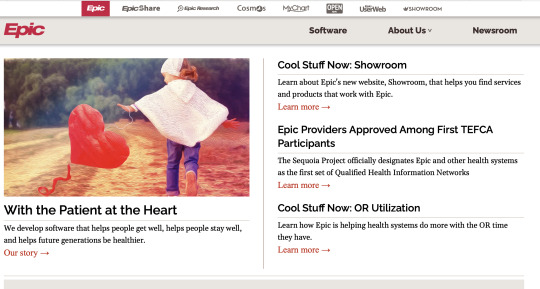
Meanwhile, new entrants like Abridge are playing with what it means to be a B2B brand selling software to hospital systems, with playful font and clear, physician-centered messaging:

I'm curious to see how this "consumer-forward" play into a traditional B2B industry plays out, and whether we can leverage a similar approach to bring better CX to medication taking.
2 notes
·
View notes
Text
Become a Digital Marketing Pro: Learn the Basics NOW!
What is Digital Marketing?
Digital Marketing refers to the marketing of products and services of a company or business through digital channels such as search engines, websites, email, social media, mobile apps, etc. It involves the use of electronic devices and the internet. Digital marketing is often referred to as online marketing, internet marketing or web marketing.
Digital marketing mainly comprises Search Engine Optimization (SEO), Social Media Optimization (SMO), and Search Engine Marketing (SEM). We can say that it can be divided into three parts SEO, SMO, and SEM. However, Email Marketing and Affiliate Marketing have also become important components of digital marketing over the past few years. So, in digital marketing, we mainly deal with the following components:
SEO
SMO
SEM
Email Marketing
Affiliate Marketing
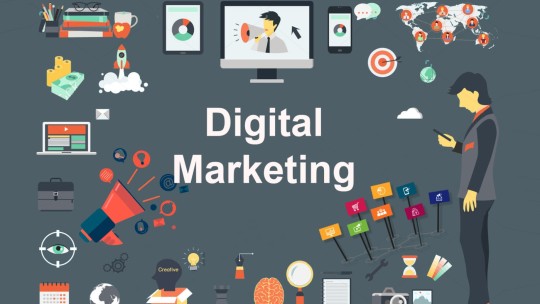
Why choose Digital Marketing?
Non-Digital Marketing, which is the traditional means of marketing, includes the usage of physical means of marketing. These are generally in the form of physical prints such as posters, flyers, newspaper advertisements, and billboards. Even at the first glance, it is quite apparent why almost every business is choosing to get into Digital Marketing.
The primary and the most fundamental reasoning for this is the amount of reach that is possible with it. There are smart devices everywhere, from televisions, laptops, computers, and tablets to smartphones. Even cars have smart systems enabled in them where you can access the Internet. All of these facilities present a blank canvas for advertising your brand.
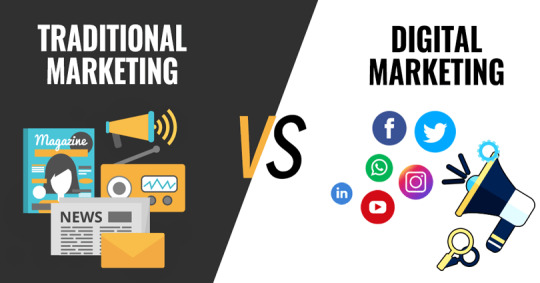
How does Digital Marketing work?
There are two ways in which Digital Marketing is implemented by brands and businesses:
B2C (Business to Customer)
B2B (Business to Business)
B2C (Business to Customer):
When a brand or a company has to sell a product or service to individual customers. In fact, 95 percent of the time, the ads and marketing that you see online are examples of B2C campaigns, e.g., an ad for a candy bar, a promotional video for a safety razor, or a movie trailer. All of these marketing efforts are targeting individual consumers and not organizations.
B2B (Business to Business):
B2B is conducted for very specific products. You wouldn’t generally see B2B products being advertised on platforms with traffic from the everyday crowd. These marketing campaigns are low profile, professional, and in most cases, marketed directly (or pitched) to the client. This client can be a small business or a corporate giant. We can take heavy-duty cooking machinery used in big fast-food restaurants as an example. What would be the point of running a TV ad for an industry-level chimney? None. This sort of marketing is done through B2B-specialized salesmen who use custom-made marketing material, PowerPoint presentations, and word of mouth to pitch their product.
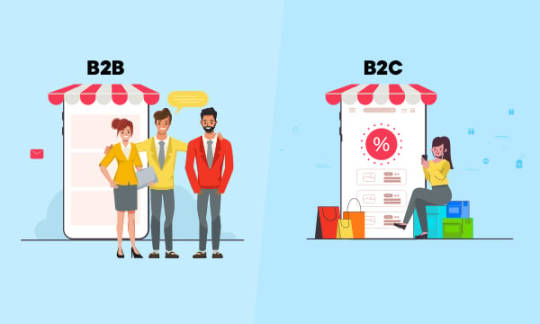
Not surprisingly, billions of marketing dollars spent on traditional channels is already starting to shift to digital marketing campaigns and this will continue to increase as the Web matures.
#digital marketing#digital marketing from basics#Introduction to digital marketing#how to learn digital marketing#what is digital marketing#online marketing#affiliate marketing#Basics of digital marketing#Why choose digital marketing#How does digital marketing work#learn digital marketing#Email marketing#search engine optimisation#seo#seo marketing
13 notes
·
View notes